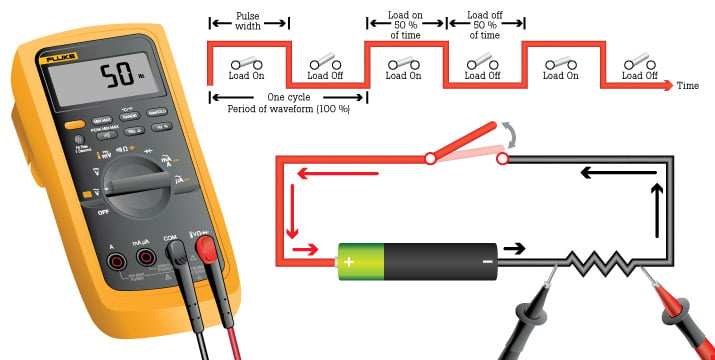Duty cycle is the ratio of time a load or circuit is ON compared to the time the load or circuit is OFF.
Duty cycle, sometimes called "duty factor," is expressed as a percentage of ON time. A 60% duty cycle is a signal that is ON 60% of the time and OFF the other 40%.

Many loads are rapidly cycled on and off by a fast-acting electronic switch which accurately controls the output power of the load. Load operation—such as lamp brightness, heating element outputs and the magnetic strength of a coil—can be duty cycle-controlled by ON and OFF time periods or cycles per second.

Duty Cycle, Simplified
If the valve is pulsed ON at variable durations (called pulse-width modulation), the duty cycle varies. If it is pulsed ON for 0.05 seconds in a 0.1-second cycle, the fuel injector duty cycle equals 50%. If it pulsed ON for 0.09 seconds of that same 0.1-second cycle, the fuel injector duty cycle equals 90%.
Example of Duty Cycle in Automotive
In an automotive electronic fuel injection system, voltage pulses supplied to the fuel injector valve solenoid control the fuel injector valve at a fixed rate of 10 cycles per second, or 10 Hz.
Pulse width modulation allows fuel supplied to the engine to be precisely controlled electronically. The voltage average for each duty cycle is determined by the amount of pulse ON time.
Duty cycled solenoids use a variable duty cycle signal to vary flow or adjust pressure. The longer a solenoid remains open, the more flow and less pressure develops. These solenoids are either feed-controlled or ground-controlled.
What is a Pulse Width?
Pulse width is a measure of the actual ON time, measured in milliseconds. The OFF time does not affect signal pulse width. The only value being measured is how long the signal is ON (ground-controlled).